THE MEMORIAL
CONCEPTION
Pulse Nightclub Attack and LGBT Memorial Commission
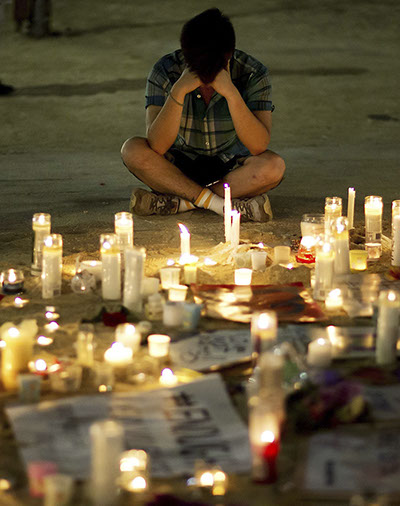
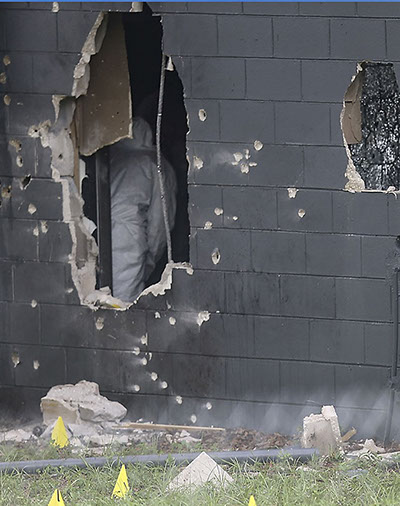
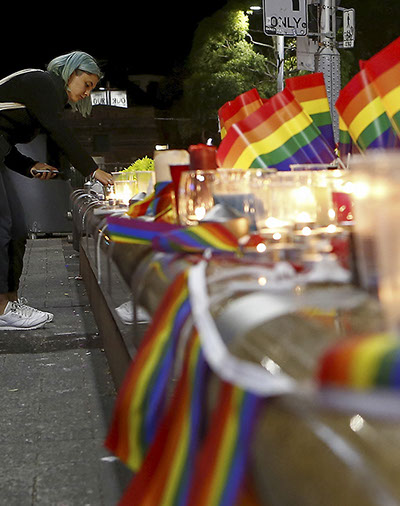
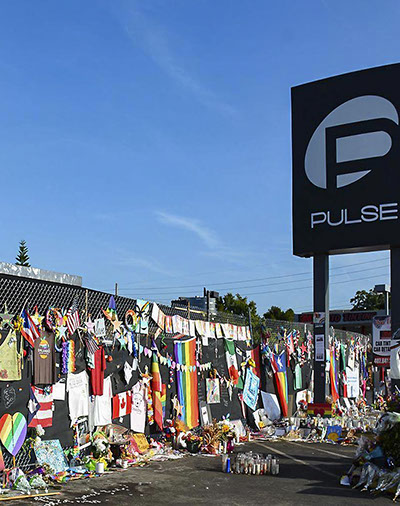

On June 12, 2016, Omar Mateen, a 29-year old security guard, drove from his home 117 miles away to Orlando, FL, and committed what at the time was the deadliest mass shooting in US history. Armed with two semi-automatics—a rifle and a pistol—Mateen walked into Pulse, a gay nightclub that was hosting their weekly Latin Night event and killed 49, and wounded 53, people.
Two weeks after the shooting New York Governor Andrew Cuomo issued Executive Order 158, establishing the LGBT Memorial Commission, whose primary goal was to oversee the design and installation of a memorial to honor the Pulse victims and other victims of prejudice and hate.
Soon after the attack, it was confirmed that the shooter was a radical Islamist. But until March, 2018, when information was released during the trial of Mateen’s wife, Noor Salman, it was generally assumed that the shooter’s purpose was to execute members of the LGBTQ community. Contrary evidence indicates that Pulse was a target chosen at the last minute, for its accessibility to the shooter, when his primary target—the Disney Springs shopping and entertainment complex—became untenable. In any case, this act of terrorism remains the single deadliest attack against LGBTQ people in US history.
The LGBT Memorial Commission was comprised of ten members appointed by the Governor, and was overseen and coordinated by Counsel to the Governor Alphonso David. LGBT Memorial Commission members include:
- Scott P. Campbell, Executive Director Elton John AIDS Foundation
- Rose Harvey, Commissioner of the NYS Office of Parks, Recreation and Historic Preservation
- Cristina Herrera, Founder and CEO of Translatina Network
- Thomas Krever, Chief Executive Officer of the Hetrick-Martin Institute
- Kelsey Louie, Executive Director of the Gay Men's Health Crisis
- Eunic Ortiz, former President of the Stonewall Democrats
- Christine Quinn, CEO of Women and Need, and marriage equality advocate
- Melissa Sklarz, trans rights advocate
- Beverly Tillery, Executive Director of the NYC Anti-Violence Project
- Glennda Testone, Exe
ARTIST SUBMISSIONS &
AWARDING OF PROJECT
The call for submissions from artists and architects went out on October 20, 2016, with a submission period ending on Nov. 21. The application included photos and a site plan of the installation location in Hudson River Park; requirements for submissions; selection criteria; and an overall budget estimate of $800,000. The Commission received 40 submissions. Three finalists, whose work was most compelling and met the criteria, were chosen.
On June 26, 2017, one year after the launching of the Commission, Gov. Cuomo announced that Anthony Goicolea’s submission was selected as the winning design, saying, “This stunning design complements the landscape and communicates a timeless message of inclusion, and this monument will serve as an enduring symbol of the role New Yorkers play in building a fairer, more just world. From Stonewall to marriage equality, New York has always been a beacon for justice and we will never waiver in our commitment to the LGBT community and to creating a more just and inclusive society. This new monument will stand up for those values for generations to come.”
The artist explained that his vision for the work drew inspiration from Stonehenge, Easter Island, burial mounds, and African stone circles. He told the New York Times in an interview: “This monument will serve as a communal space filled with light, color, and hope, where the visitors can sit, mourn, love, and remember for years to come. It feels like there are certain shapes and patterns that are encoded in our DNA as humans that transcend any particular culture and speak to how we are unified in the larger scheme. I wanted to create a space that feels familiar, even though it is new.”
FABRICATION
The installation consists of nine large “boulders”—cast bronze forms that resemble rough-hewn granite—arranged in approximate oval formation. Six of the boulders are split, each with a 4”-6” channel between the halves, into which a layer of dichroic glass is embedded. From the Greek (di-chro - of two colors), dichroic glass is prismatic glass, that refracts light into rainbow colors.
While developing his vision for the Memorial, Anthony worked with glass fabricator Linda Ross and her studio, Ross Art Studio, in Boston. In 2008, RAS had fabricated 24 life-size cast glass cinderblocks for the artist, for an exhibition in London.
For the bronze boulders, Anthony engaged Workshop Art Fabrication, in Kingston, NY. From shortly after his design was chosen at the beginning of the summer, 2017, the artist, the glass studio, and the metal shop worked together to optimize the design and fabrication approaches of the work. As the metal workers in the Hudson Valley were figuring out the best way to mount the boulders on frames that could be permanently installed in the park, the crew at RAS cast nearly 100 clear glass blocks, to be highly polished by hand and assembled and fastened into the channels in the boulders.
Starting in the spring of 2018 the boulders, which weighed between 600–1200 lbs, were transported to Boston, where the glass was installed and weatherproofed. Anthony traveled between the two studios and the installation site, overseeing the work, installing LED components, and fine-tuning the patinas.
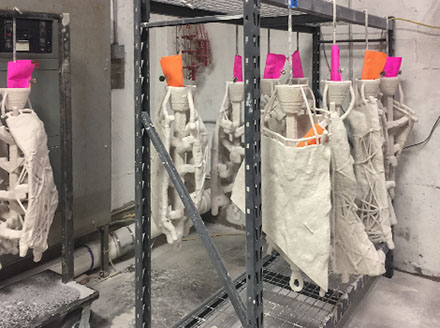
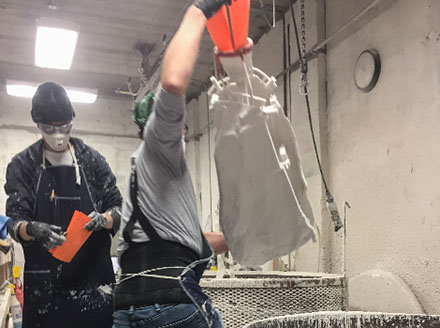
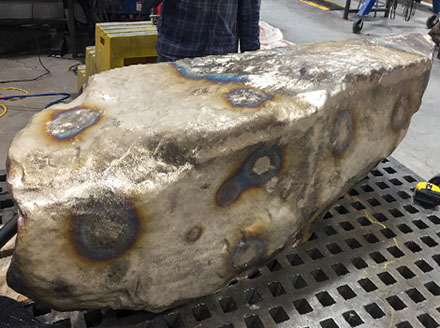
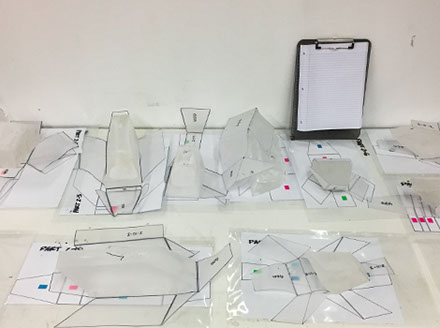
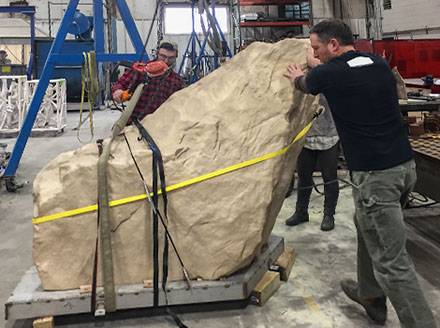

INSTALLATION AND OPENING
Working along side the artist and the installation crew were landscape architects from the NY office of Stantec, one of NY State’s premiere architectural firms for public landscape projects and art installations.
For about four weeks, starting in late May, 2018, the site was prepared to accommodate the artwork. Positions for the nine boulders, each of which was welded to a steel base and bolted to a poured concrete slab, had been carefully worked out by the artist. The design integrated stone walkways, gravel, sod, and a selection of plants to maximize the allure of the arrayed forms.
The completed installation was unveiled in a ceremony on Sunday morning, June 24, 2018, at which both Anthony and Governor Cuomo spoke. After the ceremony, as many attendees headed to the Gay Pride parade, pedestrian barriers were installed around the Memorial, where they remained for the next two weeks, to allow the sod to take root.
Contact / About